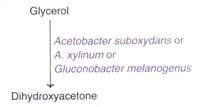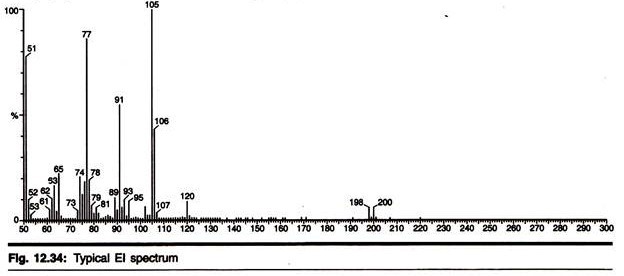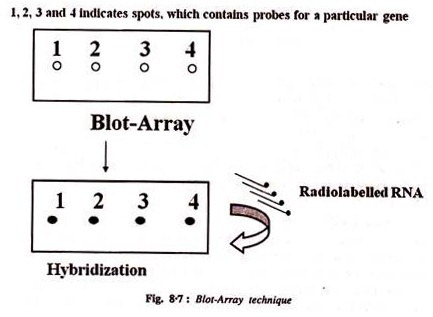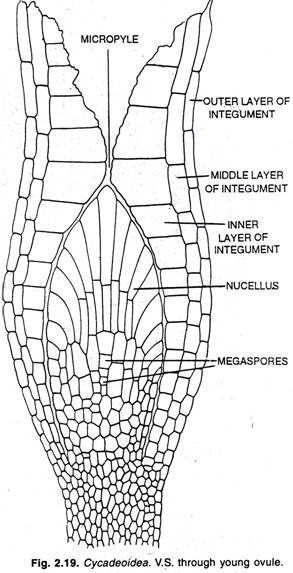ADVERTISEMENTS:
This article provides a close look on the DNA Polymerase enzymes. It also describes the role of different types of eukaryotic polymerases in DNA synthesis.
DNA Polymerase:
The principal chemical reaction catalysed by a DNA polymerase is the 5′ ![]() 3′ synthesis of a DNA polynucleotide. DNA polymerases carry out the process of addition of nucleotides and formation of polynucleotide chain. This enzyme is also called as replicase when it replicates the DNA molecules.
3′ synthesis of a DNA polynucleotide. DNA polymerases carry out the process of addition of nucleotides and formation of polynucleotide chain. This enzyme is also called as replicase when it replicates the DNA molecules.
This enzyme can add as well as remove polynucleotide (exonuclease activity):
(a) A 3′ ![]() 5′ exonuclease activity is shown by template dependent DNA polymerases. This activity enables the enzyme to remove nucleotides from the 3′ end of the strands that it has just synthesized. It is called as proofreading activity and enzyme corrects the error by removing the mismatch nucleotide.
5′ exonuclease activity is shown by template dependent DNA polymerases. This activity enables the enzyme to remove nucleotides from the 3′ end of the strands that it has just synthesized. It is called as proofreading activity and enzyme corrects the error by removing the mismatch nucleotide.
(b) A 5′ ![]() 3′ exonuclease activity is less common. However, this activity is required by the enzyme to remove already attached small DNA fragments on the template (during ligation of Okazaki fragments). DNA polymerase was isolated from E. coli by Arthur Romberg in 1957, which was also called as Korenberg polymerase. Later on it was named as DNA polymerase I after the discovery
3′ exonuclease activity is less common. However, this activity is required by the enzyme to remove already attached small DNA fragments on the template (during ligation of Okazaki fragments). DNA polymerase was isolated from E. coli by Arthur Romberg in 1957, which was also called as Korenberg polymerase. Later on it was named as DNA polymerase I after the discovery
of DNA polymerase II and III.
Now we know that DNA polymerase III, isolated in 1972, is involved in replication along with DNA polymerase I. DNA polymerase I and II are single polypeptides, but DNA polymerase III is a ten subunits protein with a molecular mass of approx. 900KD. The three main subunits which form the core enzyme are called α, ɛ and θ, with the polymerase activity carried out by a subunit and 3′ → 5′ exo-nuclease activity by ɛ. The function of θ is not clear. Besides these, there are smaller subunits like ![]() ,
, ![]() ,
, ![]() χ % and Ѱ (Table 13.1).
χ % and Ѱ (Table 13.1).
Eukaryotes have ten DNA polymerases, which in mammals are distinguished by Greek suffixes [(α, β, ![]() , ɛ,
, ɛ, ![]() , δ, δ’, θ, χ and Ψ) alpha, beta, gamma, epsilon, tau, delta, delta prime, theta, chi, psi]. These are present in the holoenzyme in equal ratio. The α and β polymerases are located in the nucleus. The β polymerase copies a poly (A) or poly (C) template.
, δ, δ’, θ, χ and Ψ) alpha, beta, gamma, epsilon, tau, delta, delta prime, theta, chi, psi]. These are present in the holoenzyme in equal ratio. The α and β polymerases are located in the nucleus. The β polymerase copies a poly (A) or poly (C) template.
The ![]() polymerase copies many poly ribo-nucleotides such as poly (A) and poly (C). The mitochondrial DNA polymerase is like Ƴ polymerase. There are only 10-15 holoenzyme molecules per cell. The holoenzyme attaches firmly to the template and move along with the leading strand until the synthesis is complete. The holoenzyme is a dimer with two active sites, one for synthesizing the leading strand and one for extending the lagging strand.
polymerase copies many poly ribo-nucleotides such as poly (A) and poly (C). The mitochondrial DNA polymerase is like Ƴ polymerase. There are only 10-15 holoenzyme molecules per cell. The holoenzyme attaches firmly to the template and move along with the leading strand until the synthesis is complete. The holoenzyme is a dimer with two active sites, one for synthesizing the leading strand and one for extending the lagging strand.
DNA Polymerase I (Pol I):
This is the first DNA polymerase enzyme isolated by Kornberg having molecular weight of 109 KD. It is a single-chain protein that requires magnesium as a cofactor. Each of its three enzymatic activities are located into distinct domains of the holoenzyme, such that proteolytic deletions can be generated that lack one or more of the activities.
The so called Klenow fragment is one such molecule that is widely used in recombinant DNA work. It is the largest single chain of peptide forming globular protein. One atom of zinc per chain is present, therefore it is a metalloenzyme. In E. coli approx. 400 molecules of Pol I are present.
Experimental evidences obtained by Kornberg by in vitro synthesis of DNA in a test tube suggested that pol I can synthesize only complementary strand. Electron microscopic study of purified pol I reveals its shape as a sphere of 65 Å.
It has several attachment sites such as template site (for attachment to the template), a primer site (attachment with RNA primer for elongation of DNA), a primer terminus site and a triphosphate site (for recognizing incoming nucleotide).
The primary function of Pol I is polymerization (synthesis of DNA) and it has subsidiary role as an exo-nuclease (removal or degradation of nucleotides). It is mainly involved in short fragment synthesis and repair. This enzyme is cleaved by trypsin into two fragments, a large fragment of 75 KD and a small fragment of 36 KD.
The large fragment shows 3′ → 5′ exonuclease activity and the small fragment shows 5′ → 3′ exonuclease activity.
Due to 5′ → 3′ exonuclease activity it involves in removal of RNA primer and filling the gap between Okazaki fragments by synthesis of DNA fragments.
DNA Polymerase II (Pol II):
This is a 90KD polypeptide mainly involved in 5′ → 3′ repair synthesis. It has 3′ → 5′ exonuclease activity which shows its involvement in repair. It has no 5′ → 3′ exonuclease activity. A cell has about 40 molecules of pol II. Experimental evidences suggest that it can seal Okazaki fragments and carry out the functions of pol I in its absence.
DNA Polymerase III (Pol III):
It is heterodimer of two polypeptide chains having molecular weight of 900 KD. It is the main and most active enzyme which can add about 150,000 nucleotides per minute during DNA polymerization. However, it requires auxiliary proteins (co-polymerase II) for the synthesis of long DNA strand. It has only 3′ → 5′ exonuclease activity.
ADVERTISEMENTS:
DNA polymerases are obtained by transferring the gene for this protein into E. coli. Thus, polymerases obtained from different sources differ slightly in their properties. These properties and specific uses are described here.
The E. coli DNA polymerase I is a DNA-dependent DNA polymerase that possesses both 3′ → 5′ and 5′ → 3′ exonuclease activities. DNA polymerase I was used frequently in the early days of recombinant DNA technology for radio-labelling DNA and synthesizing cDNA.
However, other enzymes have proven to be more effective for these purposes, including a proteolytic fragment of DNA polymerase I called Klenow fragment and T4 DNA polymerase. The holoenzyme DNA polymerase I is no longer frequently used (Fig. 13.1).
Large (Klenow) Fragment of E. coli DNA Polymerase I:
The 5′ → 3′ exonuclease activity of E. coli’s DNA polymerase I makes it unsuitable for many applications. However, this enzymatic activity can readily be removed from the holoenzyme. Exposure of DNA polymerase I to the protease subtilisin cleaves the molecule into a small fragment, which retains the 5′ → 3′ exonuclease activity, and a large piece called Klenow fragment (Fig. 13.2). The large or Klenow fragment of DNA polymerase I has DNA polymerase and 3′ → 5′ exonuclease activities, and is widely used in molecular biology.
In addition to generating Klenow fragment by proteolysis, it can be expressed in bacteria from a truncated form of the DNA polymerase I gene.
Uses of Klenow fragment:
i. Synthesis of double-stranded DNA from single-stranded templates:
ADVERTISEMENTS:
The function of DNA polymerases is to synthesize complementary strands during DNA replication. DNA polymerases require a primer to provide a free 3′ hydroxyl group for initiation of synthesis. The primers used for most in vitro polymerization reactions are single-stranded DNAs, typically 6 to 20 bases in length, called oligonucleotides. The oligonucleotides must be complementary to some section of template DNA. The reaction proceeds are depicted in the Figure 13.3.
ii. Filling in recessed 3′ ends of DNA fragments:
A “fill-in” reaction is used to create blunt ends on fragments created by cleavage with restriction enzymes that leave 5′ overhangs. This reaction is conceptually identical to the one described above, but with a huge primer and a very short segment of single-stranded template.
ADVERTISEMENTS:
iii. Digesting away protruding 3′ overhangs:
This is another method for producing blunt ends on DNA, in this with ends generated from restriction enzymes that cleave to produce 3′ overhangs. The 3′ → 5′ exonuclease activity of Klenow will digest away the protruding overhang. Removal of nucleotides from the 3′ ends will continue, but, in the presence of nucleotides, the polymerase activity will balance the exonuclease activity, yielding blunt ends. This reaction is more efficiently conducted with T4 DNA polymerase, which has much more potent exonuclease activity.
T4 DNA Polymerase:
T4 is a bacteriophage of E. coli. The activities of T4 DNA polymerase are very similar to Klenow fragment of DNA polymerase I; it functions as a 5′ → 3′ DNA polymerase and a 3′ → 5′ exonuclease, but does not have 5′ → 3′ exonuclease activity.
In general, T4 DNA polymerase is used for the same types of reactions as Klenow fragment, particularly in blunting the ends of DNA with 5′ or 3′ overhangs.
There are however, two differences between the two enzymes that have practical signficance:
1. The 3′ → 5′ exonuclease activity of T4 DNA polymerase is roughly 200 times that of Klenow fragment, making it preferred by many investigators for blunting DNAs with 3′ overhangs.
ADVERTISEMENTS:
2. While Klenow fragment will displace downstream oligonucleotides as it polymerizes, T4 DNA polymerase will not. This attribute makes T4 DNA polymerase the more efficient choice for certain types of oligonucleotide.



